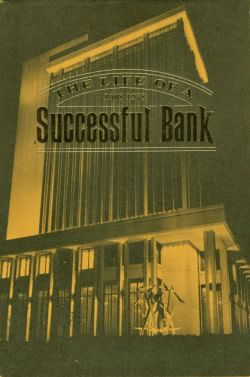 On a fine Sunday afternoon (7/22/2007), I ventured to Antique Avenue Market at 5219 N. Western (immediately west of Bishop McGuiness School) to visit Doug Hamilton and his "booth" there. I was looking for some "vintage" maps ... which I got, plus the neat little book described here, as well!
On a fine Sunday afternoon (7/22/2007), I ventured to Antique Avenue Market at 5219 N. Western (immediately west of Bishop McGuiness School) to visit Doug Hamilton and his "booth" there. I was looking for some "vintage" maps ... which I got, plus the neat little book described here, as well!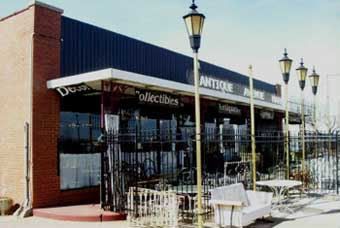
Doug H. is a good friend and an Okc history benefactor of mine (from him, I got my copies of Born Grown, Vanished Spendor, Vols. I, II, III, and And Satan Came Also, among other things (he'll also sell you some fru-fru stuff like Okc vintage matchbooks, Beverly's "finger bowls," etc., if you'll let him!). Not for me! I just want "hard history!"
But, if "hard history" is to be found, I'm a sucker!
I did find a pair of neat old maps (1913 and 1957 city maps -- they are a work in progress for later Doug Dawgz Blog posts but will soon arrive). Of course, I had to buy a few postcards that I didn't have!
But, the small jewell that I picked up from Doug is the book described in this post, The Life of a Successful Bank, 1908-1978, the story of Fidelity Bank, Oklahoma City, and it may have been my best "find" of the day (even if I paid more for the other items I purchased)!
The book isn't large (88 pages including the index) and its paper is not glossy (and so the images could be better), but it does contain information I'd not yet learned from any other source. The book was published in commemoration of the bank's 70th birthday, 1978. Even though the bank has now been absorbed by Tulsa-based Bank of Oklahoma, it is a good thing to remember Fidelity Bank and its contribution to Oklahoma City's legacy.
At the time it was written, its Chairman and Chief Executive Officer was Jack T. Conn ... as in "Father of the Conncourse" which has recentely been renovated and renamed, "The Underground." But, Conn was the guy that got that done in the 1st place.
Except As Noted, All Are From The Book
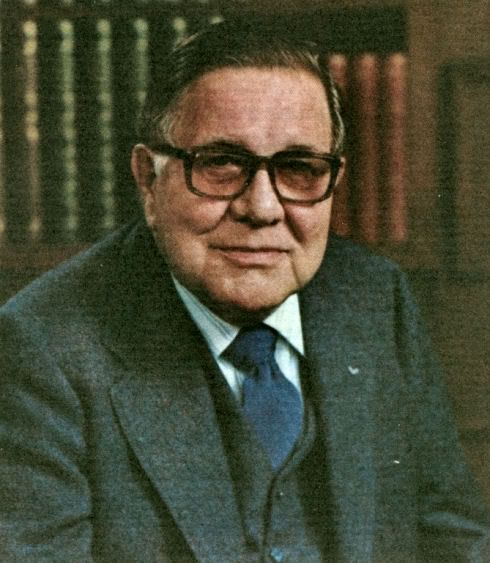
I hadn't realized that "Fidelity Bank" owed its origins to the "First State Bank." The 1st home of "First State Bank" was the "Lee Building" in April 1908 (now called the Oil & Gas Building) at the northeast corner of Main & Robinson. Then, the Lee Building looked like this:
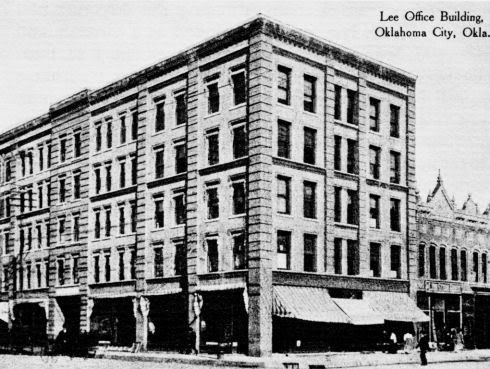
Both Fidelity and Liberty Banks weathered the financial panic of 1907 and survived for quite a long while ... even though 6 Oklahoma City banks failed during 1911-1912. In 1913, new investors moved the First State Bank to the Colcord Building. While there, an interesting anecdotal story in the book reads,
Banking in those days was not solely a matter of high finance. In January of 1916, for example, the direcotors met for an entire afternoon to examine notes carried by the Bank and charged off five notes -- three for ten dollars, one for seven dollars, and one for eight dollars. Later that year the board voted to charge off the remainder of a note after the debtor signed over to the Bank a valuable stallion in part payment.In 1921, the bank went "national" and assumed its new name, "Fidelity Bank." And, in 1923, it also found a new home ... the Baum Building. The image, below, of the Baum Building, is the very best that I've personally seen.
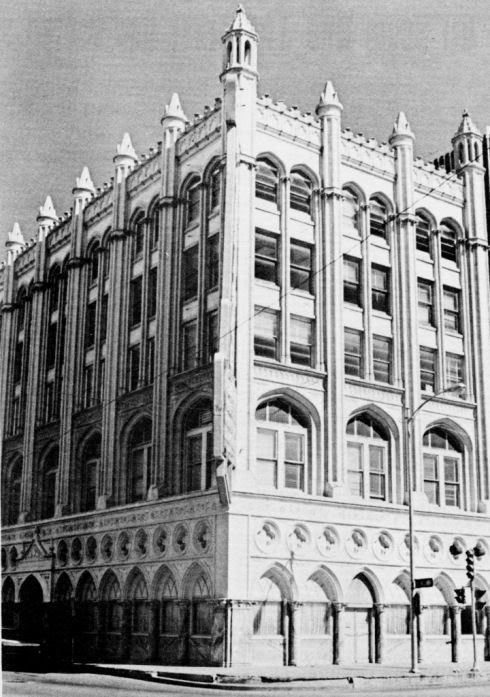
From the Oklahoman's Archives, August 16, 1986
Larger Image Not Available
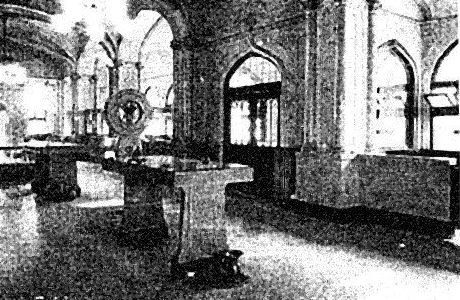
The caption above the August 16, 1986, Oklahoman article reads, "The majestic interior of the banking floor in the Baum Building helped create the popular opinion that the bank had the most beautiful office in downtown Oklahoma City."
As the post-World War II environs of the bank expanded, the gorgeous Baum Building was no longer adequate to handle the bank's needs ... and so it built the 1st "skysraper" in Oklahoma City following World War II, finished in 1957 ...
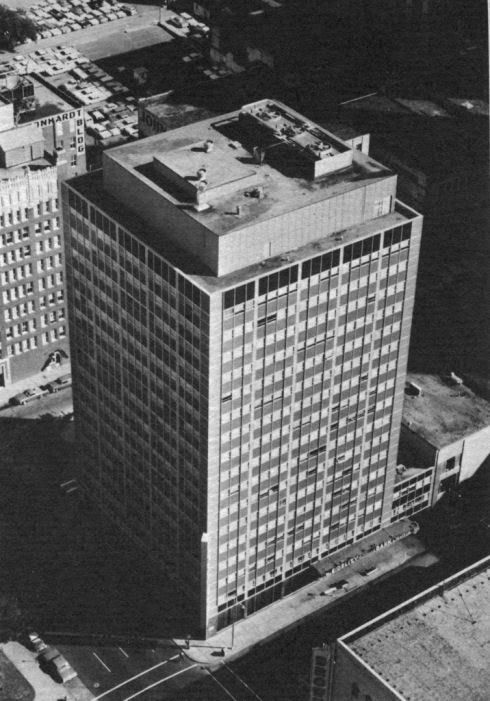
After Fidelity Bank established its new quarters in the newer still building shown in the cover (above, top), its 1957 structure, above, became known as the "Park Harvey Center," which served for many years as an office building before being converted to an apartment building in this day. This building was my office home for more than 12 years.
Mr. Conn was very much into Oklahoma City history ... hence, the tunnel's name "Conncourse." In that subterranean walkway dedicated in 1974, he stuck a little piece of history into it ...
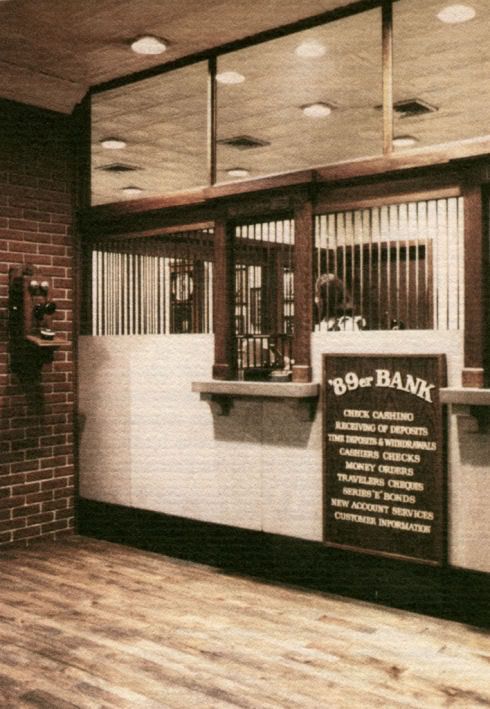
While not failing as many Oklahoma banks did in the "Penn Square Bank/Oil Bust" miseries of the time, the bank did suffer and, with a new multibank law in effect, Fidelity merged with Tulsa based BankOklahoma Corp. In 1983, when the merger offer was initially presented, Bank of Oklahoma was Tulsa's largest bank with assets of $1.5 billion and Fidelity was Okc's 3rd largest bank with assets of $765.8 million. At that time, the Tulsa based bank had already acquired 9 banks in the Tulsa area.
In 1987, the once-fine Whitehall Club which occupied the top 2 stories of the building closed due to dwindling membership. Opening in 1972, a July 9, 1972 Oklahoman article said that it was modeled after a famous English residence of kings and that Jack Conn was the "guiding light" for the project. A June 20, 1987, Oklahoman article notes the auctioning of numerous Whitehall Club items, such as a Louis XIV (14) commode, topped by a gray marble lid. Before the auction, the article quoted the auctioneer as saying that, "This is one of the largest and most elegant restaurant sales we ever made in the state," he noting that about 115 red velvet chairs in excellent conditon were in the offerings.
Not mentioned in the book is the fact that state and federal judges were offered free membership in the club. A December 16, 1981, Oklahoman article titled, "Judges See Nothing Wrong With Free Club Membership," noted that about 20 Oklahoma County and Federal judges received club priveleges without having to pay the $400 enrollment and $25 monthly membership fee. Right! Wrong! The article names names and quotes quotes but I'll not do that here, but what a hoot since the article notes that the bank was a party ligitant in more than 50 county-court casees during the 2 years before the article was written!
I will add one quote from the same article which will do no disredit to the others since I've not mentioned them by name ... and the quote that I will add from the aricle is from a local district court judge that some lawyers came to dislike because of his bad-courtroom-manners ... to lawyers and/or to litigants ... but I haven't ever heard of him being faulted because he was not even-handed about the law or the facts presented to him. That man is Jack R. Parr, District Judge, Oklahoma County, at the time. The article reads,
"I don't accept that sort of thing," Parr said. "Somebody might give me a Cadillac and keys and I wouldn't accept that either. I don't think it's proper for a judge to accept any sort of free gifts or memberships," Parr said. "One thing is just like another."In days long gone, Doug Dawgz got his whippings for doing things I've since forgotten before Judge Parr ... but ... everyone else got them, too. Judge Parr was consistently the same to everyone in his courtroom and so the impoliteness he could present could cut everyone to the quick. But, as to the law, everyone (lawyers, at least) knew that he would read, and apply, the law as it was written to the facts before him decide. I've never heard a criticism about him in that respect, ever.
As regards the issue and the above article, Judge Parr was certainly "in the right," in my opinion.
Of course, the above stuff occurred after this small and perhaps "self-serving" book was written. Still, this little book is quite a charmer, containing more history than I've said here. It's a good find!














9 comments:
In about 1964 I worked at Pan American Petroleum which had their offices in the Fidelity Bank Building at Park and Harvey. We had 4 or 5 long rows of ceiling high file shelves. We were moving the files to a different part of the building. We unloaded the files from the bottom first which made the shelves top heavy. The shelves tipped and fell like dominoes. Window glass and files fell 14 floors onto Park Ave. We were lucky that it was Saturday so there was no traffic on the side walk. Norman
You know, I remember the Whitehall. I was working at Bok-okc when it closed. I remember Ramona Terry the Manager. I can also remember having a breakfast meeting with Dewey Milby and we were talking about the bank's exposure to the then failing Kelly-Johnson Companies (Chi-chi's). I sure do miss those times even though I was only a working class slob.
Speaking of the Whitehall (and Fidelity), my grandfather watched the 1977 demolition of the OKC Biltmore from that vantage point. I posted his pictures on my flickr page:
http://www.flickr.com/photos/strph/9975742/
My dad was President and CEO of Fidelity Bank until he had to retire because of Parkinson's Disease in the early 80's. His name was Forrest D. Jones. He oversaw the construction of the "new" building. Chairman Jack Conn was a great guy, as were many of the other officers there. Ironically, one of the officers, Bill Jennings left to run Penn Square Bank, which became the tipping point for all those bank failures back then.
Is the First State Bank mentioned in 1906 the same one of which Irving H. WHEATCROFT was President? I have listings from the 1916-1918 OK City Directory that say he is President of the "First State Bank". I am trying to find out more about him and his activities in OK (he's my husband's grandfather).
Thanks for any help anyone can give me! I'm in upstate NY and hard to get to OK records that aren't online...
Dori,
I've looked in the Oklahoman's archives between 1901 and 1920 and located a few articles mentioning Irving H. Wheatcroft. I've copied them and placed them in a temporary folder in my photobucket account at this location.
In the above article, note that I said, "In 1913, new investors moved the First State Bank to the Colcord Building." The Colcord Building is not shown in the images in the above article, but you can see the building in the article I've about Charles F. Colcord who built the still-standing building (it is a hotel today). Go here for the Colcord.
Thank youy VERY much for the articles, Doug... and for the clarification on the photos.
Dori
Doug,
Would you happen to have a picture of John A Campbell, former President of Fidelity National Bank? If so, please you share it with me. I found a letter from F P Finerty, President. It was also on bank letterhead.
Jason, no, I don't. Sorry that I can't help.
Post a Comment